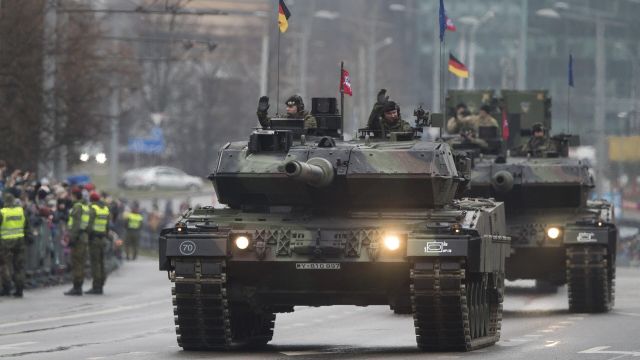A diesel engine with a capacity of 1130 horsepower, together with the transmission units, forms a monoblock system - this facilitates maintenance and repair. The maximum speed on the highway is 70 kilometers per hour, the power reserve is 550 kilometers. In addition, there is an auxiliary power plant that provides electricity for electronic equipment when the main engine is turned off.
The heirs of the Tigers
Now the APU will have the most colorful tank fleet in the world. Along with the still combat-ready T-64 and T-72, American M1A2 Abrams, German Leopard 2 and British Challenger 2 will be put into operation. If France and Italy are connected, Leclerc and C1 Ariete will be added.
These are modern and formidable machines. They are especially dangerous if they go on the offensive in a narrow sector of the front.
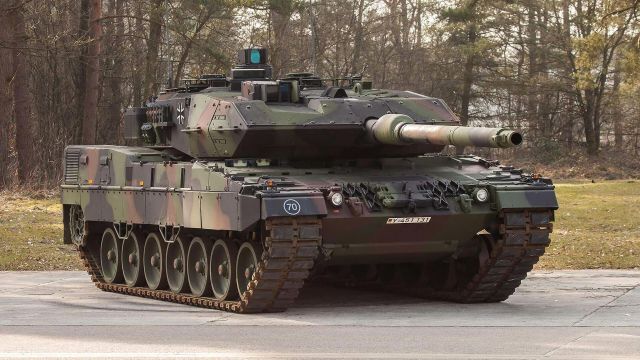
Leopard 2 tank of the German Army Image source: © Photo : Bundeswehr/Marco Dorow
The most powerful is the Leopard, the second largest main battle tank in NATO after the Abrams. It was developed during the Cold War and has been repeatedly upgraded. Kiev was promised modifications A4, A5 and A6. The Germans have no more than a hundred of the most modern A7+.
Leopard 2 is a classic tank layout. The engine and transmission compartment is in the aft part of the car, the combat compartment is in the middle, the control is in the frontal. The crew consists of four people: the commander, the driver, the operator-gunner and loader.
The gun is a Rheinmetall smoothbore, the caliber is 120 millimeters. The engine is 1500 horsepower. The maximum speed on the highway is 72 kilometers per hour, the power reserve is up to 550 kilometers.
The A4 variant was produced in the second half of the 1980s. Then they significantly improved the armor protection of the tower, increased the survival rate of the crew, provided more powerful projectiles, and upgraded the ballistic computer. This modification is the most "belligerent" to this day: for example, Turkey is actively using it in Syria.
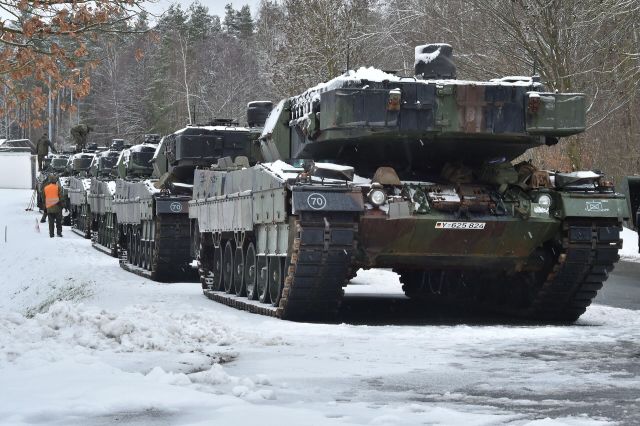
German Leopard 2 tanks Image source: © Photo : U.S. Army / Gertrud Zach
Version A5 is from the 1990s. The forehead and sides of the tower were covered with modules of spaced armor, the cannon mask was completely redesigned. The driver's hatch was also redesigned, which improved the view. The electrohydraulic gun stabilization system was replaced with a fully electric one, the gunner received an upgraded sight, and the commander received an independent second—generation thermal imager built into a panoramic observation device. The tank was also provided with a GPS navigation system.
As a result, the car became heavier to 62 tons.
In A6, the tower was made even stronger, mine protection was added. The length of the gun barrel was increased by 11 calibers. Muzzle energy, the initial velocity of the projectiles and, as a result, their armor penetration and range of destruction also increased.
Increased survival rate
The most dangerous enemy of the German "cats" is the T—90M, the most modern Russian tank. This is a deeply redesigned version of the machine adopted in the 1990s. In the modernized tower there is a developed aft niche with ammunition. Under normal conditions, the firing compartment is isolated from the combat compartment and crew, which dramatically increases survival.
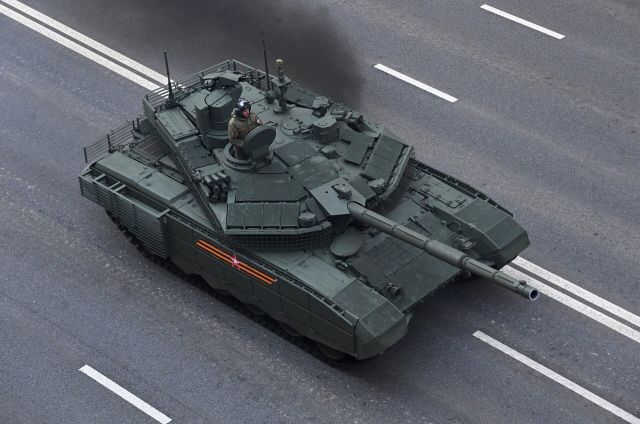
T-90M "Breakthrough" tank Image source: © RIA Novosti / Evgeny Odinokov
The forehead of the hull and turret are covered with combined armor with additional overhead protection. The complex of dynamic protection of the Relict type, capable of reflecting a shot even from the most modern Western ATGMS, covers from cumulative ammunition. Specially for the T-90M, multi-layer "Cape" covers were created, reducing the visibility of the machine in various ranges and reducing the detection range.
A diesel engine with a capacity of 1130 horsepower, together with the transmission units, forms a monoblock system - this facilitates maintenance and repair. The maximum speed on the highway is 70 kilometers per hour, the power reserve is 550 kilometers. In addition, there is an auxiliary power plant that provides electricity for electronic equipment when the main engine is turned off.
This feature makes the tank ideal for ambush attacks. For example, one of the predecessors — the T-72B3 — requires a rather noisy engine to be fired first.
In addition, the T-90M is perfectly oriented on the battlefield. The fire control system "Kalina" has a combined day-night sight of the gunner "Sosna-U" and a panoramic sight of the commander of the PC PAN. There is an automatic target tracking, a two-plane stabilizer of weapons, means of identification "friend-foe", means of navigation. According to the monitoring devices, the car is in no way inferior to its Western counterparts.
Many factors
In general, Leopard 2 for the T-90M is not so invulnerable. Experts say that the armor of German cars is effective only at distances over 2000 meters.
"Plus, these tanks, unlike the Russian ones, are not equipped with dynamic protection against cumulative ammunition. At line—of-sight ranges of up to 1,500 meters or less, which are characteristic of the terrain in Ukraine, the armor of NATO tanks will confidently break through with shells of Russian 2A46 tank guns," explained Viktor Murakhovsky, editor-in-chief of the Arsenal of the Fatherland magazine.
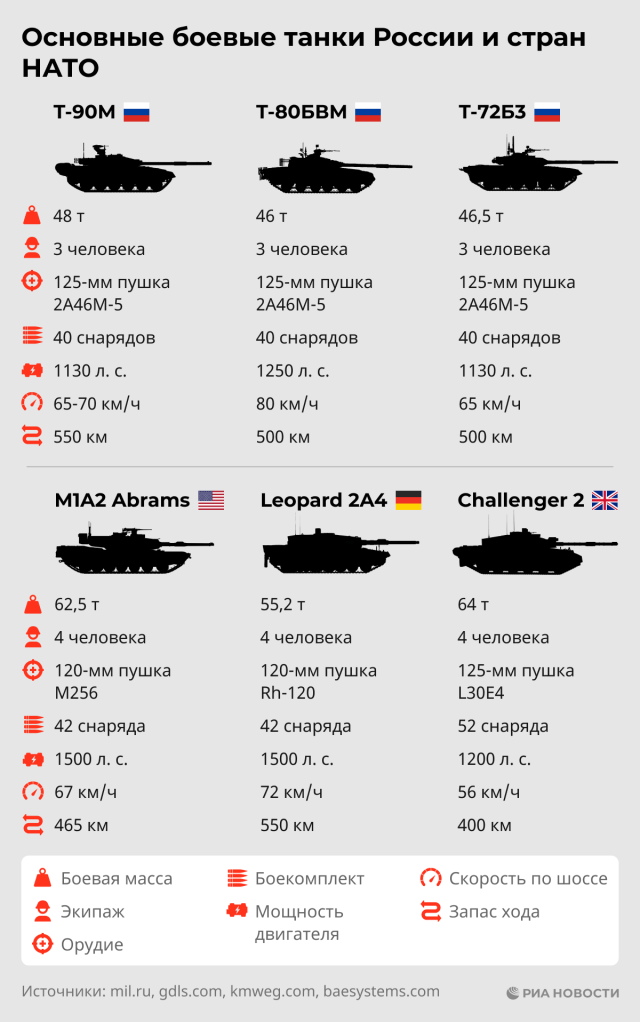
Main battle tanks of Russia and NATO countries Image Source: © Infographic
However, the Leopard cannon punches the T-90M in the forehead from the same distances. The advantage of the Russian car can be attributed to a lower profile, which allows you to disguise yourself in the folds of the terrain. The "cat" is much more noticeable. However, he has more advanced surveillance devices and a thermal imager.
The success of a particular machine on the battlefield does not always depend on the nominal tactical and technical characteristics. The decisive factors are the level of crew training, intelligence, interaction with other units, stable communication. In addition, the worst enemy of a tank on the battlefield is not another tank, a grenade launcher or an ATGM operator, but an attack helicopter.
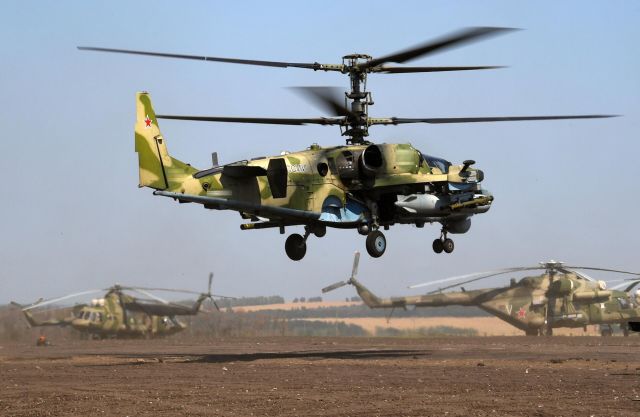
The Ka-52 attack helicopter of the Russian Aerospace Forces at the airfield Image source: © RIA Novosti / Kirill Norton
"Leopards" are quite a suitable target for the Ka—52, which carries up to 12 anti-tank missiles "Whirlwind-M". Each — with a tandem cumulative fragmentation warhead weighing 8-12 kilograms. Hitting the thin armor of the roof of the tower or engine compartment is guaranteed to destroy any tank. The range is ten kilometers, which covers the range of Western MANPADS and allows you to aim without entering the air defense zone. And given the size, it will be very difficult for Western cars to hide.
